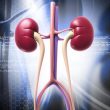In the early days of percutaneous coronary intervention (PCI) in patients with ST elevation acute myocardial infarction (STEMI), no reflow phenomenon was known as an indicator of the worst possible outcomes in terms of left ventricular remodeling, infarct size, ejection fraction and mortality, at long term. The TOTAL study (Routine Aspiration Thrombectomy with PCI Versus...
Simplified Rapid Intravenous Hydration for the Prevention of Contrast-Induced Nephropathy in Patients with Chronic Kidney Disease
Patients with chronic kidney disease (CKD) undergoing coronary angiography are at increased risk of developing contrast-associated acute kidney injury (CA-AKI), which is associated with increased mortality. According to current guidelines, the standard treatment for preventing CA-AKI in patients with moderate to severe CKD is long-duration peri-procedural intravenous hydration with saline solution. This standard hydration is...
Opportunity for Fellows! 1 Year Training Program from McMaster University (Canada) – SOLACI Invitation
McMaster University in Canada, is developing a 1-year training program on imaging guided percutaneous coronary intervention (non-invasive cardiac CT, IVUS and OCT). From SOLACI, we extend the invitation to all Latin American fellows, since we consider this a unique opportunity to apply and be able to advance your careers in such a renowned institution of...
Relationship between Distal Vessel Quality and Outcomes in the Treatment of Chronic Total Occlusions
Percutaneous treatment of chronic total occlusions has increase, and has become a a more habitual therapeutic challenge. However, there is limited information on distal vessel quality and its association with outcomes and techniques. This variable appears to be excluded form CTO scores, except for the RECHARGE (REgistry of CrossBoss and Hybrid procedures in FrAnce, the...
Aortic Stenosis and Cardiogenic Shock: Is TAVR an Option?
Cardiogenic shock (CS) in a setting of aortic stenosis is associated with high mortality rates. In consequence, surgery is generally not a possibility for this patient group, and they usually undergo aortic valvuloplasty, resulting in a mortality rate of 33%-50% at 30 days, 70% at one year, and 90% at two years. While transcatheter aortic...
Calcified Nodules and the Importance of OCT Categorization prior PCI
TLR associated factors in patients with calcified nodules. Patients with complex cardiomyopathies undergoing percutaneous coronary intervention are increasingly common, as is the case for calcified lesions and calcified nodules (CN). Procedure complexity not only involves planning, but also establishing patient prognosis, taking into consideration the fact that most target vessel events occur at long term...
Minimal Stent Area: New IVUS Parameter?
Intravascular Ultrasound (IVUS) has shown, in several studies, its great benefits for both restenosis and mortality reduction. Even though several variables have been studied, so far minimal stent area (MSA) has been disregarded as important. The OPTIVUS-Complex PCI looked at 961 patients with 1,957 lesions, and found 1.6% TLR incidence (30 lesions). There were no...
Frequency and Causes of Mortality in Chronic Total Occlusion
In recent years, there has been an increase in the number of percutaneous coronary interventions (PCI) performed to treat chronic total occlusion (CTO). This increase is due to the availability of more advanced technology and greater experience of both operators and specialized centers. However, it is important to note that this technique is not free...
Useful Predictor of Adverse Events in Complex PCI: BCIS CHIP Score
Among patients undergoing percutaneous coronary intervention (PCI), there is a need for risk stratification for successful planning and post procedural management. Risk stratification is paramount for effective decision making. For a long time, the SYNTAX score has been the preferred tool for complex PCI patient risk assessment. However, it has important limitations, such as inter-observer...
Post PCI Angina: Inevitable or Avoidable?
Predictors of post PCI angina Among the complications of ischemic cardiomyopathy stenting, those called chronic, with significant functional and mental compromise, might affect patient quality of life. This can be observed in different scenarios, such as instent restenosis and post PCI angina. This kind of complications is associated with anxiety and depression at long term. ...









